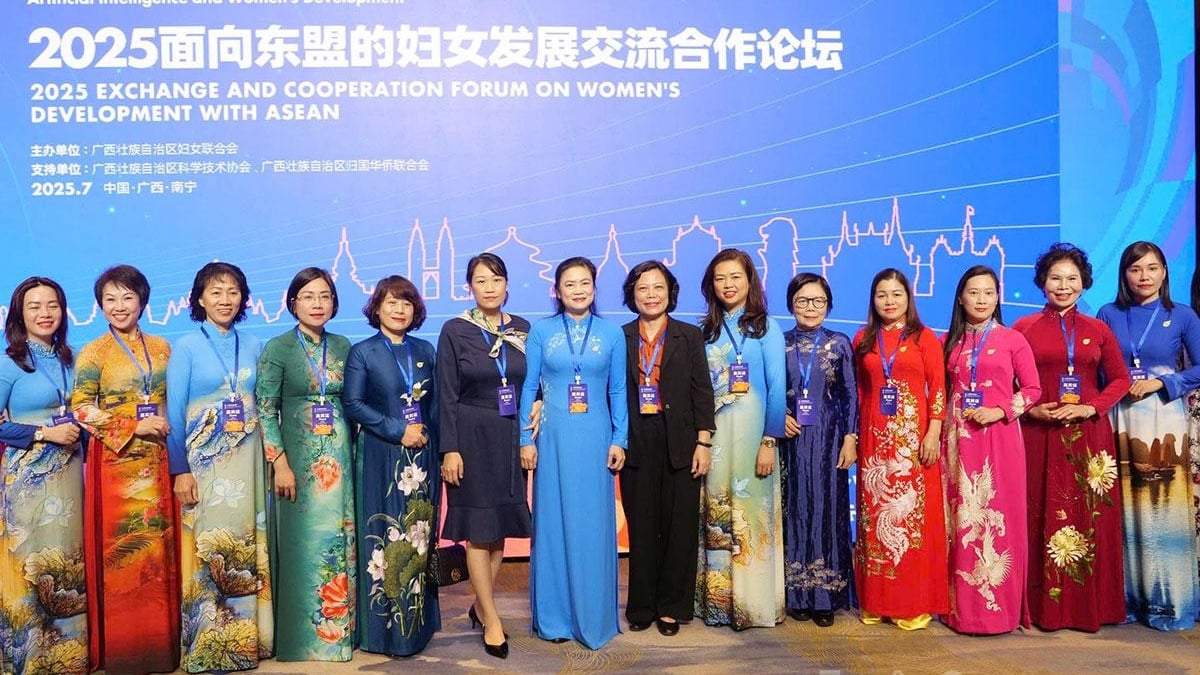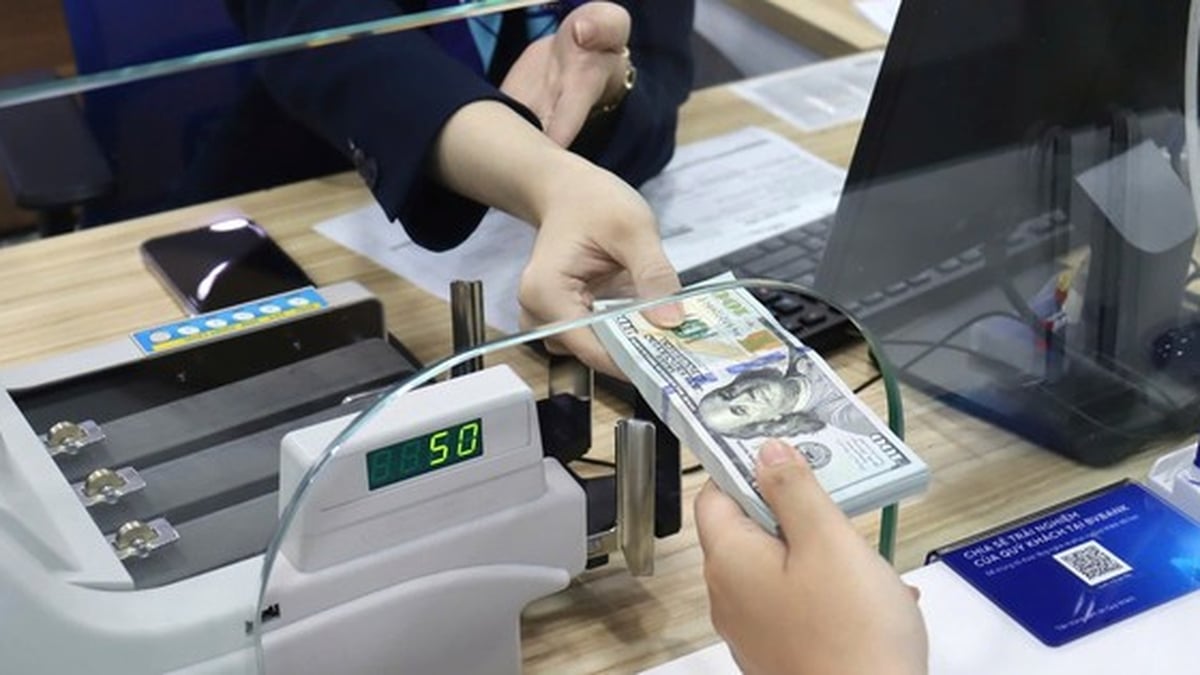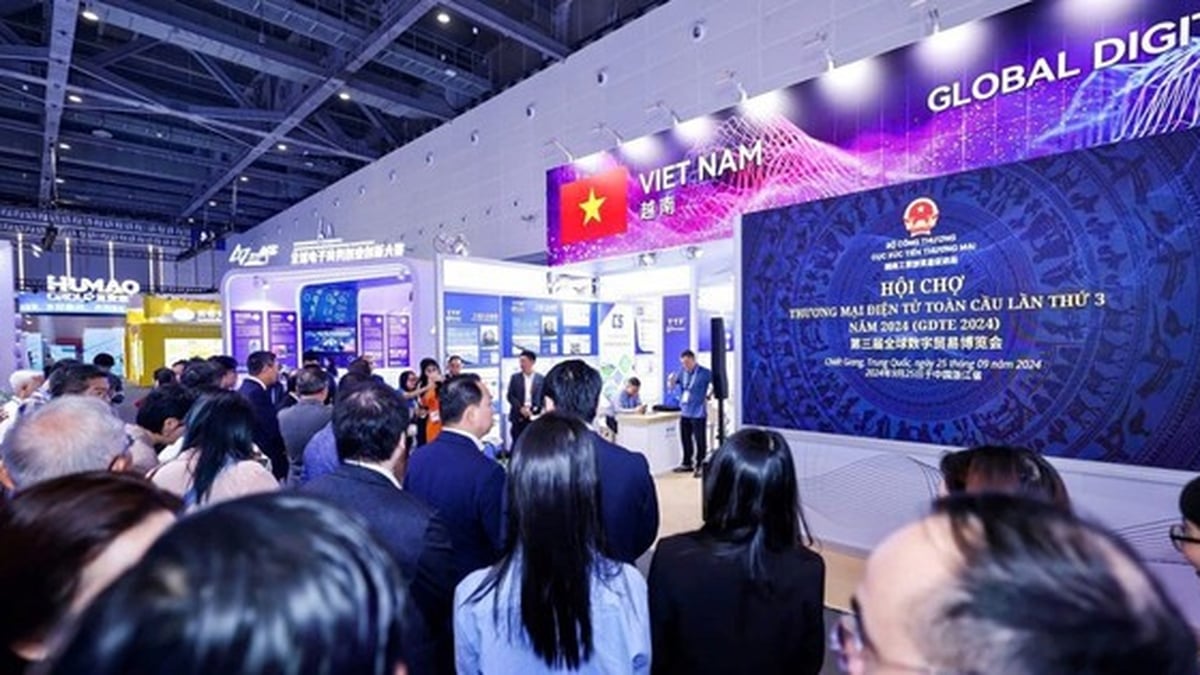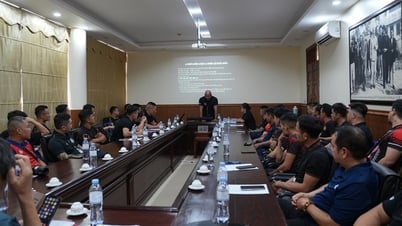Vietnamese chip ambition
Exactly 16 years ago today, when the project in Ho Chi Minh City of the world's leading semiconductor corporation Intel had not yet taken shape, the first chip of Vietnam was born.
Chip making process and participation of Vietnamese enterprises

Source: Semiconductor Association (SIA)
Pioneer
In the early 2000s, along with the establishment of the first high-tech park in the country, Ho Chi Minh City saw opportunities from the semiconductor industry - a product considered the "brain" of all electronic devices. "The chip is the final product of this industry. To develop long-term, we must invest in research on materials, design and production," said Associate Professor Dr. Phan Thanh Binh, former Director of Ho Chi Minh City National University from 2007 to 2016. As early as 2004, the largest human resource training facility in the South established a Laboratory, now the Institute of Nanotechnology. With the advice of a French partner, this place was invested in a clean room system capable of manufacturing semiconductor components on a research and teaching scale. A year later, ICDREC was established, focusing on design - the first step in the four-step chip manufacturing process. Regarding semiconductor materials, Ho Chi Minh City National University did not have enough experts to establish a specialized research unit at that time, according to Mr. Binh. Two years after introducing the 8-bit chip (the number of information units that can be processed at a time), ICDREC continued to announce the successful design of a 32-bit chip. At that time, this result was considered a breakthrough when the popular chip lines in the world were all 32-bit and 64-bit. By 2014, the center chose the 8-bit processing chip line for commercialization. The batch of 150,000 chips was manufactured in Taiwan, capable of being applied to many devices such as electronic electricity meters, vehicle tracking, and water treatment systems. These chips only took a few hours to produce, but were a potential first step for the ambition of being self-sufficient in semiconductor technology. At that time, ICDREC Director Ngo Duc Hoang said that 8-bit chips were not new, but were still widely used in simple electronic products. The market for this type of chip in Vietnam was worth billions of dollars. However, that was the first and last batch of commercial chips from this center.
Vietnam's first commercial chip designed by ICDREC. Photo: ICDREC.
Jump
When the first foreign microprocessors were mass-produced in Vietnam, FPT - the leading technology company in the country - also quietly recruited Vietnamese engineers abroad. Their goal was to make "made in Vietnam" chips. "We specialize in software production, but hardware has always been one of our dreams," said Tran Dang Hoa, Chairman of FPT Semiconductor, then a senior manager of FPT Software. Nguyen Vinh Quang was one of the first engineers to join FPT's chip team at Hoa's invitation in 2014. Nearly a decade in the semiconductor industry helped Quang understand the reality: if you launch a product without a brand on the market, the probability of failure is high. Therefore, the company chose to start with the outsourcing path, that is, designing solutions according to orders from outsourced chip companies, in parallel with researching and developing its own products. It took 8 years since nurturing the chip ambition for FPT to officially move from its starting point as an employee to becoming a master in the microchip industry.
FPT chips arranged in the shape of a map of Vietnam, displayed at the Techday event in October 2023 in Hanoi. Photo: Van Anh
After Covid-19, the supply chain was broken and trade tensions between major countries caused a supply crisis in the global chip industry. The market was "thirsty" for chips, so the group immediately seized the opportunity and officially established FPT Semiconductor in 2022. Mr. Quang became the General Director. Power chips - microchips to ensure stable power supply in devices - are the company's first product. "The world does not only have advanced 2-3 nm processing chips. Power chips are not difficult to make, but every product needs them," Mr. Quang said. With the explosion of smart devices connected to the Internet of Things (IoT), the demand for different types of chips is also increasingly diverse. But many customers cannot ask big brands to fine-tune power chip designs according to their own requirements, because the products are of small value. That is the opportunity for FPT Semiconductor. When proposing product designs according to the needs of partners, the company immediately received orders. In the past two years, the company has launched three lines of power chips, selling more than 25 million products. "Our quality can be 80-90% equivalent to that of major brands, but still meets customer needs, especially at half the price," FPT Semiconductor CEO confidently said. The company focuses on serving not-so-large orders both domestically and internationally - a segment often overlooked by famous chip brands. Not stopping at popular products, Vietnamese engineers are gradually moving towards complex chip lines with high commercial value. At the end of October 2023, Viettel High Tech (VHT) announced its first chip product - 5G DFE - designed entirely by the company's engineers, integrated with AI technology. The chip model has the ability to process 1,000 billion calculations per second - "modest" than new generation products with dozens of times more calculation capacity, but is the most complex chip ever designed by Vietnamese people. The chip was launched by Viettel 5 years ago, when 5G technology was gradually being deployed in the world. Mr. Le Thai Ha, chief engineer of VHT, said that at that time, many major telecommunications equipment companies in the world such as Huawei, Ericsson, Nokia, ZTE, Samsung had designed 5G chips themselves, instead of using third-party products like in the 4G generation. The goal was to create a technological breakthrough and surpass competitors. The market did not have suitable chips for the new generation network, forcing Vietnamese companies to fend for themselves. "Self-developed chips are a must if you want to be self-sufficient and competitive in the 5G equipment segment," Mr. Ha said, calling this an ambitious, costly project, but one that cannot be avoided. Mastering the design process is an important step for Vietnam to participate more deeply in the global semiconductor industry, in the context that the world has not yet provided a commercial 5G chip product line. This is the premise for Viettel to move towards producing chips serving many fields such as AI, 6G, IoT in the future. The Ministry of Information and Communications forecasts that the scale of the semiconductor industry in Vietnam by 2030 is estimated to reach 20-30 billion USD. However, only two domestic enterprises, FPT and Viettel, have participated in this market at the first stage, out of a total of more than 50 companies in the industry. In terms of production, Vietnam has packaging and testing factories of some large corporations such as Intel or Amkor, but does not have any manufacturing facilities (fab). The model chosen by Vietnamese companies such as Viettel High Tech and FPT Semiconductor is fabless, which means only designing products and selling them, without building factories. For example, FPT's chip manufacturing process is ordered in Korea, while packaging and testing are done in Taiwan.Need the state's hand
“Fabless is a suitable choice for businesses, but on a national level, we still need manufacturing plants if we want to create a real push,” said Prof. Dr. Dang Mau Chien, Chairman of the Council of the Institute of Nanotechnology. Countries with a position on the semiconductor industry map do not stop at chip design, but master all three stages. In addition, complete dependence on foreign chip manufacturing plants will lead to security risks, especially for microchip products used in the field of national security and defense. In Southeast Asia alone, the two stages of design and packaging involve five countries, including Vietnam. But only Singapore and Malaysia have manufacturing plants, according to statistics from consulting firm Ernst & Young.Distribution of semiconductor production chain in Southeast Asia ( Source: EY )
 Pursuing the fabless model, FPT Semiconductor's leaders also believe that Vietnam needs a complete ecosystem if it wants to turn semiconductors into a national industry. "We hope that one day our chips will be manufactured domestically to reduce costs," said Mr. Quang. This is also the long-term goal of the manager: to make Vietnam an important link in the semiconductor microchip industry ecosystem with full design, production, packaging, testing, and equipment manufacturing activities by 2040. Of which, the manufacturing plant is the most expensive stage in the semiconductor industry. The initial capital is estimated at billions of USD for clean room systems, machinery and equipment. However, according to Professor Chien, that is the number to produce advanced chip lines in mobile devices and computers. Simple chips only need from a few dozen to a few hundred million USD. He cited that over the past 20 years, the Institute of Nanotechnology has invested about VND200 billion (more than USD8 million), and has still been able to manufacture some basic chips with 5-6 layers of photolithography masks - an important step in the manufacturing process that determines the complexity of the chip. Meanwhile, on the market, many popular chip lines require 25-35 layers. "If we have expensive machinery and precision equipment, we are completely capable of manufacturing more sophisticated chips. The basic process is the same, whoever masters the core steps will gradually be able to make complex products," said Professor Chien. He gave the example that many engineers after practicing the chip manufacturing process at the institute can easily go abroad to work for large corporations with very high salaries.
Pursuing the fabless model, FPT Semiconductor's leaders also believe that Vietnam needs a complete ecosystem if it wants to turn semiconductors into a national industry. "We hope that one day our chips will be manufactured domestically to reduce costs," said Mr. Quang. This is also the long-term goal of the manager: to make Vietnam an important link in the semiconductor microchip industry ecosystem with full design, production, packaging, testing, and equipment manufacturing activities by 2040. Of which, the manufacturing plant is the most expensive stage in the semiconductor industry. The initial capital is estimated at billions of USD for clean room systems, machinery and equipment. However, according to Professor Chien, that is the number to produce advanced chip lines in mobile devices and computers. Simple chips only need from a few dozen to a few hundred million USD. He cited that over the past 20 years, the Institute of Nanotechnology has invested about VND200 billion (more than USD8 million), and has still been able to manufacture some basic chips with 5-6 layers of photolithography masks - an important step in the manufacturing process that determines the complexity of the chip. Meanwhile, on the market, many popular chip lines require 25-35 layers. "If we have expensive machinery and precision equipment, we are completely capable of manufacturing more sophisticated chips. The basic process is the same, whoever masters the core steps will gradually be able to make complex products," said Professor Chien. He gave the example that many engineers after practicing the chip manufacturing process at the institute can easily go abroad to work for large corporations with very high salaries. 
Engineers at the Institute of Nanotechnology (VNU-HCM) manufacture semiconductor components in a clean room for research and teaching. Photo: Quynh Tran.
But not only capital and human resources, the market is the biggest obstacle if we want to develop the domestic chip industry, according to Associate Professor Phan Thanh Binh. If we only focus on affordable popular chips, Vietnam will have to compete on price compared to products from leading countries like China. The case of ICDREC is a typical example. He believes that the four factors for success in this high-tech industry include: research universities, businesses that understand the market and are willing to invest, experts with practical experience to support, and especially the state to coordinate. "Chip production must be in large quantities, the factory must operate 24/7. The question is who will consume the products, is the policy ready to support this new field or not?", he asked. The customers of the chip industry are electronics manufacturing enterprises. Meanwhile, the number of Vietnamese enterprises with a foothold in this field is very small. 99% of the annual export turnover of electronic products belongs to the foreign direct investment (FDI) sector, according to the General Department of Customs. Master Nguyen Phuc Vinh, a semiconductor chip expert, agrees that this field needs the regulatory hand of the state to develop. The government has a goal of digital transformation in all fields, which means the demand for electronic, information technology, and IoT devices will be very large. If the state places direct orders or creates technical barriers with high security requirements, prioritizing domestic products, the Vietnamese engineering team is capable of autonomously designing and producing chips for telecommunications products, wifi modems, cameras, etc. "Devices directly related to people's data should prioritize the use of Vietnamese chips. That is the way to protect national security in the digital space," said Mr. Vinh. Twenty years is not a long time for Vietnam to have a foothold in the high-tech industry that requires absolute precision like semiconductor chips. But according to Mr. Nguyen Vinh Quang, this is the time when all three factors of heaven, earth and people are in harmony for Vietnam's chip ambitions. To solve the problem of global chip thirst, many leading countries in semiconductor technology such as the US and Japan want to support Vietnam to enter this market, and this is also the future direction of the country. "Our generation has nurtured the dream of making chips in Vietnam since the first day of entering the profession. But a few sparks back then could not make a difference. But now, it is the fire of the whole country," said Mr. Quang.Content: Viet Duc - Luu Quy
Graphics: Hoang Khanh - Thanh Ha
Vnexpress.net
Source link






























































![[Maritime News] More than 80% of global container shipping capacity is in the hands of MSC and major shipping alliances](https://vphoto.vietnam.vn/thumb/402x226/vietnam/resource/IMAGE/2025/7/16/6b4d586c984b4cbf8c5680352b9eaeb0)





































Comment (0)